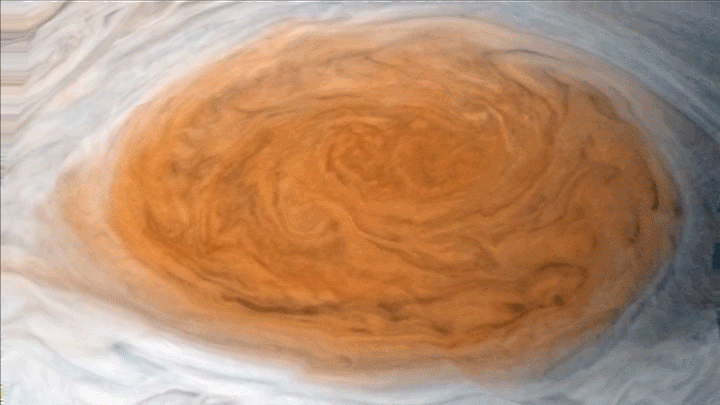Watch: Nasa's Juno digs deep into Jupiter's ferocious Great Red Spot storm
Nasa studies roots of Jupiter's Great Red Spot in detail.

Nasa has found that Jupiter's Great Red Spot – the ferocious storm of crimson-coloured clouds which is 1.3 times as wide as Earth – goes well into the planet's atmosphere.
After analysing Juno's first observation of the Great Red Spot, the agency was able to dig deep into the phenomenon and simulate it in a video.
According to a statement, the massive oval, which features clouds racing at speeds far greater than any storm on Earth, penetrates well into the planet's atmosphere, with its roots going as much as 300km deep.
"Juno found that the Great Red Spot's roots go 50 to 100 times deeper than Earth's oceans and are warmer at the base than they are at the top," said Juno co-investigator Andy Ingersoll. "Winds are associated with differences in temperature, and the warmth of the spot's base explains the ferocious winds we see at the top of the atmosphere."
The Great Red Spot is one of the Solar System's most famous storms measuring 16,000km across, or nearly one and half times as wide as Earth. It has been under observation since 1830 and is believed to exist for more than 350 years.
However, over the years, the size of the storm has appeared to diminish. A comparison of the latest observations with the ones from Voyager 1 and 2 dating back to 1979 suggests over 38 years the width of the storm has shrunk by one-third and the height by one-eighth.
The agency made this revelation after analysing data collected from Juno space probe's Microwave Radiometer. "Juno's Microwave Radiometer has the unique capability to peer deep below Jupiter's clouds," said Michael Janssen, Juno co-investigator from Nasa's Jet Propulsion Laboratory in Pasadena, California.
The simulation video, which peers through the upper atmosphere of Jupiter and takes viewers deep into the Great Red Spot, has been created with a combination of images taken from the spacecraft's JunoCam imager and computer-generated animation.
Among other things, Juno has also spotted a couple of new radiation zones – one revealing high-energy particles within the inner edges of Jupiter's relativistic electron radiation belt and the other with high-energy hydrogen, oxygen and sulphur ions moving at near the speed of light near the equator.





















